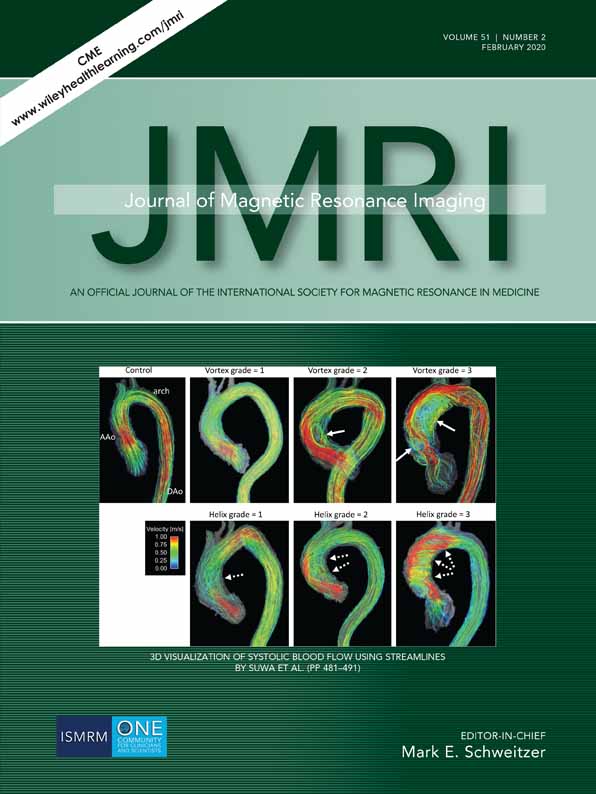Deep semantic lung segmentation for tracking potential pulmonary perfusion biomarkers in chronic obstructive pulmonary disease (COPD): The multi-ethnic study of atherosclerosis COPD study
Abstract
Background
Chronic obstructive pulmonary disease (COPD) is associated with high morbidity and mortality. Identification of imaging biomarkers for phenotyping is necessary for future treatment and therapy monitoring. However, translation of visual analytic pipelines into clinics or their use in large-scale studies is significantly slowed by time-consuming postprocessing steps.
Purpose
To implement an automated tool chain for regional quantification of pulmonary microvascular blood flow in order to reduce analysis time and user variability.
Study Type
Prospective.
Population
In all, 90 MRI scans of 63 patients, of which 31 had a COPD with a mean Global Initiative for Chronic Obstructive Lung Disease status of 1.9 ± 0.64 (μ ± σ).
Field Strength/Sequence
1.5T dynamic gadolinium-enhanced MRI measurement using 4D dynamic contrast material-enhanced (DCE) time-resolved angiography acquired in a single breath-hold in inspiration. [Correction added on August 20, 2019, after first online publication: The field strength in the preceding sentence was corrected.]
Assessment
We built a 3D convolutional neural network for semantic segmentation using 29 manually segmented perfusion maps. All five lobes of the lung are denoted, including the middle lobe. Evaluation was performed on 61 independent cases from two sites of the Multi-Ethnic Study of Arteriosclerosis (MESA)-COPD study. We publish our implementation of a model-free deconvolution filter according to Sourbron et al for 4D DCE MRI scans as open source.
Statistical Test
Cross-validation 29/61 (# training / # testing), intraclass correlation coefficient (ICC), Spearman ρ, Pearson r, Sørensen–Dice coefficient, and overlap.
Results
Segmentations and derived clinical parameters were processed in ~90 seconds per case on a Xeon E5-2637v4 workstation with Tesla P40 GPUs. Clinical parameters and predicted segmentations exhibit high concordance with the ground truth regarding median perfusion for all lobes with an ICC of 0.99 and a Sørensen–Dice coefficient of 93.4 ± 2.8 (μ ± σ).
Data Conclusion
We present a robust end-to-end pipeline that allows for the extraction of perfusion-based biomarkers for all lung lobes in 4D DCE MRI scans by combining model-free deconvolution with deep learning.
Level of Evidence: 3
Technical Efficacy: Stage 2
J. Magn. Reson. Imaging 2020;51:571–579.




